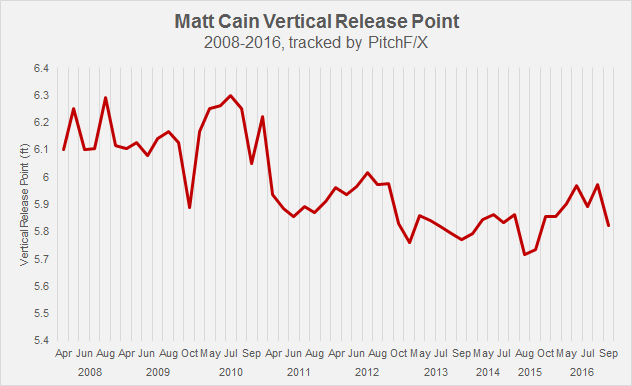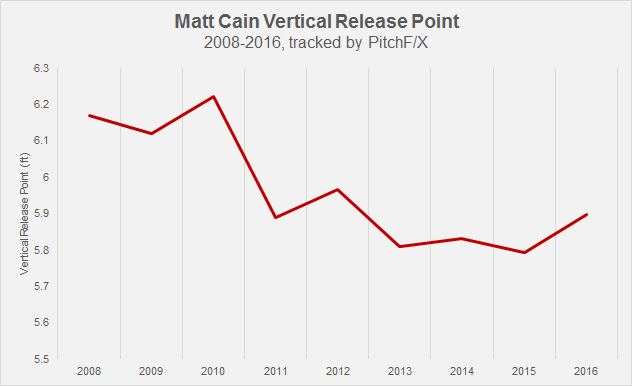In early December, after the Giants inked Mark Melancon to a four year, $62 million dollar deal, GM Bobby Evans had an interesting quote on the state of the team’s payroll and offseason plans going forward:
“I don’t think there’s anything more to ask of ownership,” Evans said, referring to the payroll. “It’s really a matter of what I can do within what we have.”
And, the real thing that caught my eye:
“I’ve talked to Matt at length this winter and his expectation and commitment is to come in here and fight for that fifth spot,” Evans said Wednesday. “He believes he can come in and give us a significant number of innings.”
Matt Cain has largely been hurt and/or ineffective since 2013. 2012 was the last time Cain would be an above average pitcher (126 ERA+, 3.40 FIP, 3.7 WAR). Since that season, Cain has not topped 200 innings pitched and, because of injuries, in the last three years he has yet to break the 100 inning mark. Because of arm troubles, Cain largely moved away from the fastball — which has lost a few ticks since his earlier days — and instead relied on a lower vertical release point and his slider. I wrote about this a little in 2014 on McCovey Chronicles on this particular post.
Since then, has much changed with Cain’s release point?

Not much. Cain saw a slight uptick in his vertical release point this past season, but he is nowhere near his 2008-2010 levels. If you look at the graph on a yearly average (pictured below), you can see a very slight upward movement on Cain’s release point, but nothing that I would say is significant.

A quick look at Cain’s pitch-type data on FanGraphs reveals that he’s still throwing the slider nearly a quarter of the time (25.4 percent in 2016) as he has continued to back away from his fastball.
While the Giants will surely give Cain every opportunity to compete and win the 5th starter job in spring training — Cain is owed $20.8M this season — it’s unlikely that Cain will be able to provide the Giants with much positive value. And, with Tyler Beede in the wings, it’s likely that Cain won’t be pitching much in the rotation past June. For all the credit the Giants get for making shrewd contract extensions on their homegrown players, the Cain extension, in hindsight, is probably one the team would rather pass on if it could do things again. Cain has indeed been a great Giant, and one of my personal favorites, but his age, injury history, and other indicators suggest that if the Giants are depending on great things from Cain in 2017, they are most likely going to be disappointed.